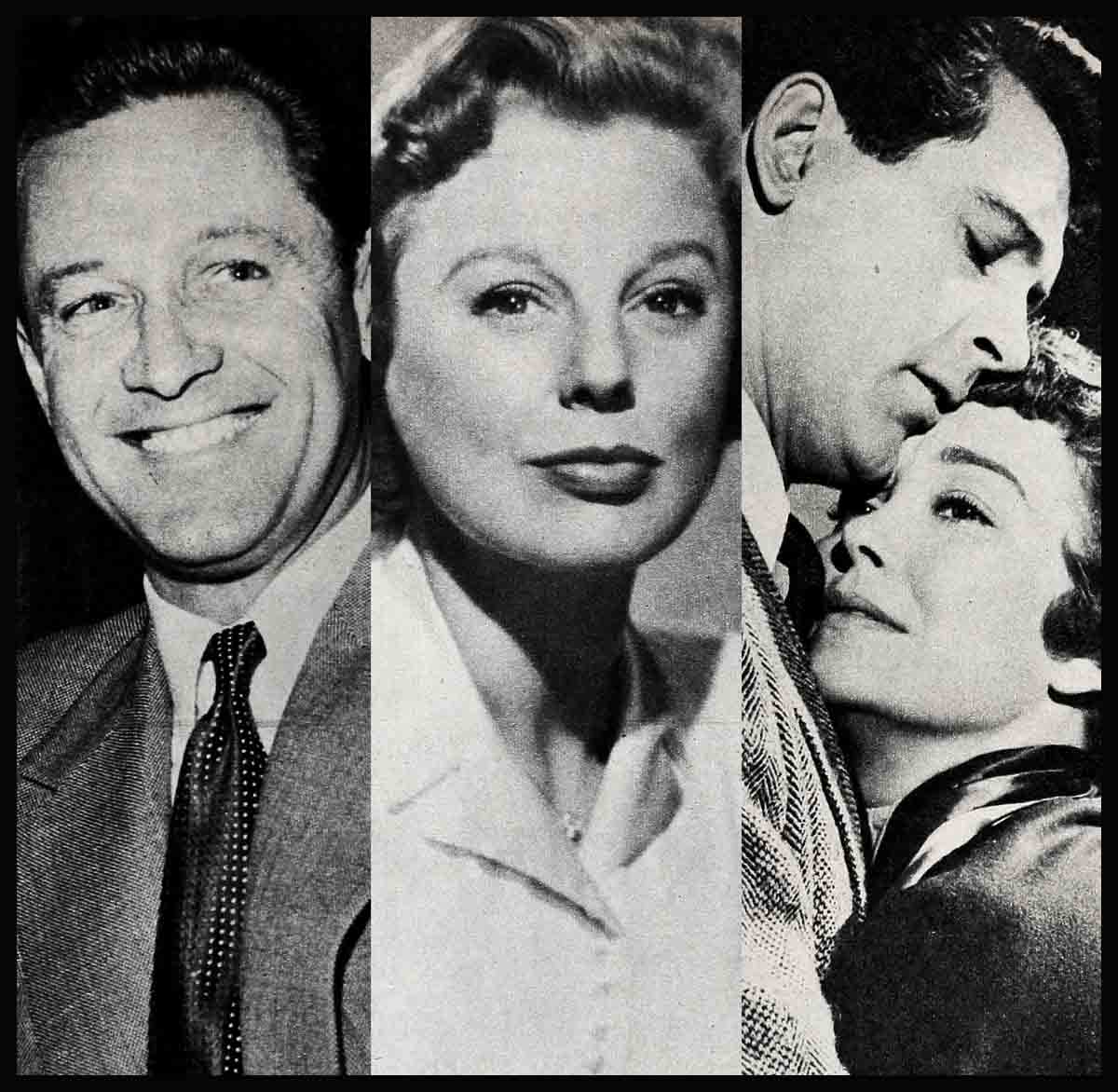
Announcing Photoplay’s Award Winners Of 1954-55
Hollywood history was made on the evening of February 10th. For the thirty-fifth year, PHOTOPLAY’s Gold Medal awards singled out the movies and the stars that have won the public’s deepest affection. And, for the first time, newer stars who may be the Gold Medal winners of tomorrow stepped up to claim their honors on the same evening. These were the victors in the “Choose Your Stars” contest, decided by the ballots of PHOTOPLAY’s readers.

Loved first for the fizz and sparkle of sheer youth, June Allyson now has shown fans all the richness of her warm, witty, wise self. They vote her the best!
Celebrities gathered in the Crystal Room of the Beverly Hills Hotel felt a nice extra glow of sentiment about the occasion. For Dick Powell, as master of ceremonies, had the pleasure of presenting the Gold Medal to his wife. It seems June Allyson is the American filmgoer’s favorite wife, too. Her delightful portraits of marital devotion in U-I’s “The Glenn Miller Story,” M-G-M’s “Executive Suite” and 20th’s “Woman’s World” brought her the accolade as the most popular movie actress of 1954. She continues the tradition this year in Paramount’s “Strategic Air Command” and Warners’ “The McConnell Story,” but slips from wifely grace in U-I’s “The Shrike.”
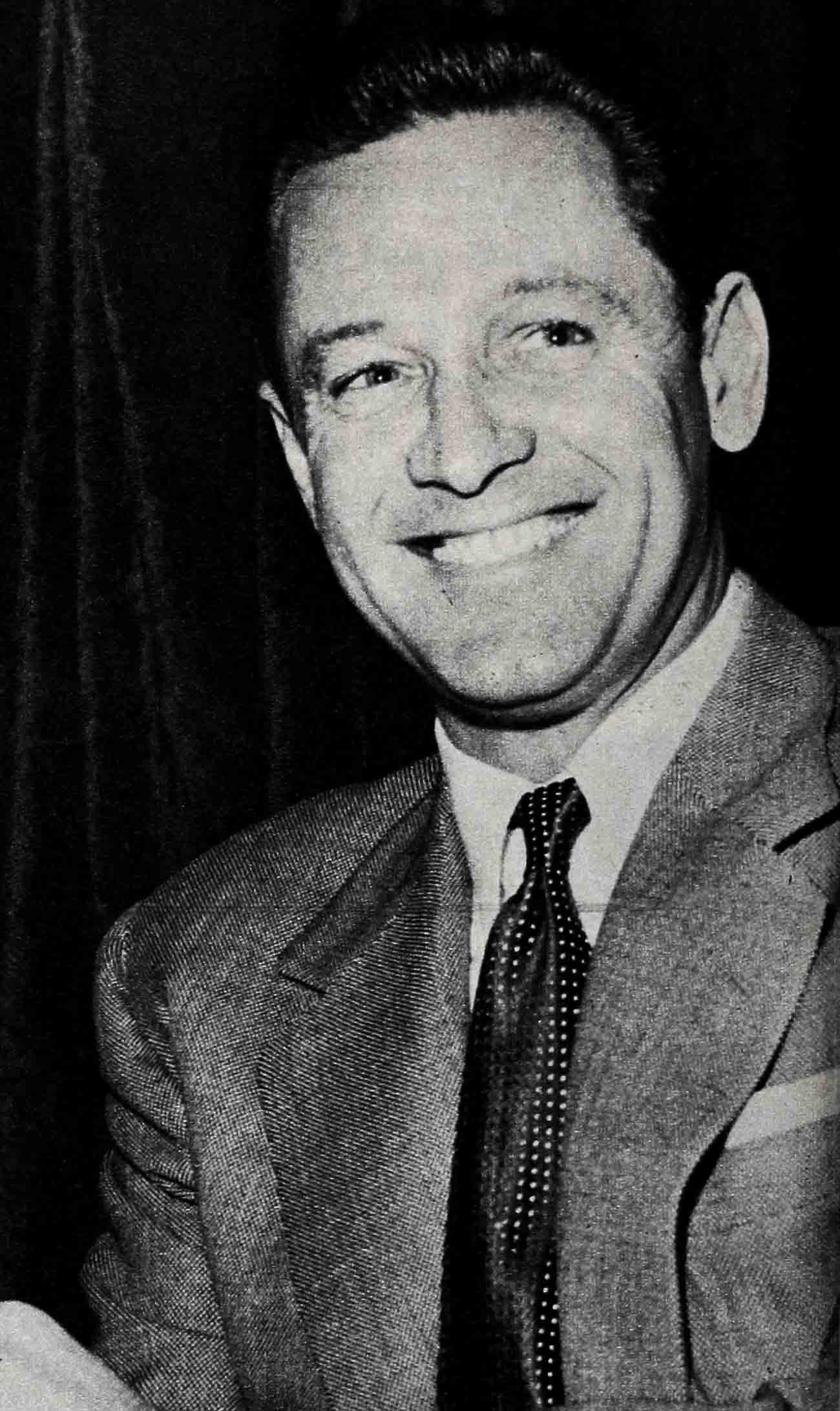
Personally, William Holden’s a pretty reserved character. But before the cameras he opens up, giving moviegoers a full measure of fine acting every time
By coincidence, it was one of June’s movie husbands who joined her at the top of the Gold Medal list—William Holden (wed to her in “Executive Suite”). On the subject of Holden, moviegoers agree heartily with Bill’s fellow moviemakers, who last year voted him an Oscar. A playboy in “Sabrina,” a serious young director in “The Country Girl,” he starts 1955 by again doing Paramount proud in “The Bridges at Toko-Ri,” as a valiant jet pilot.
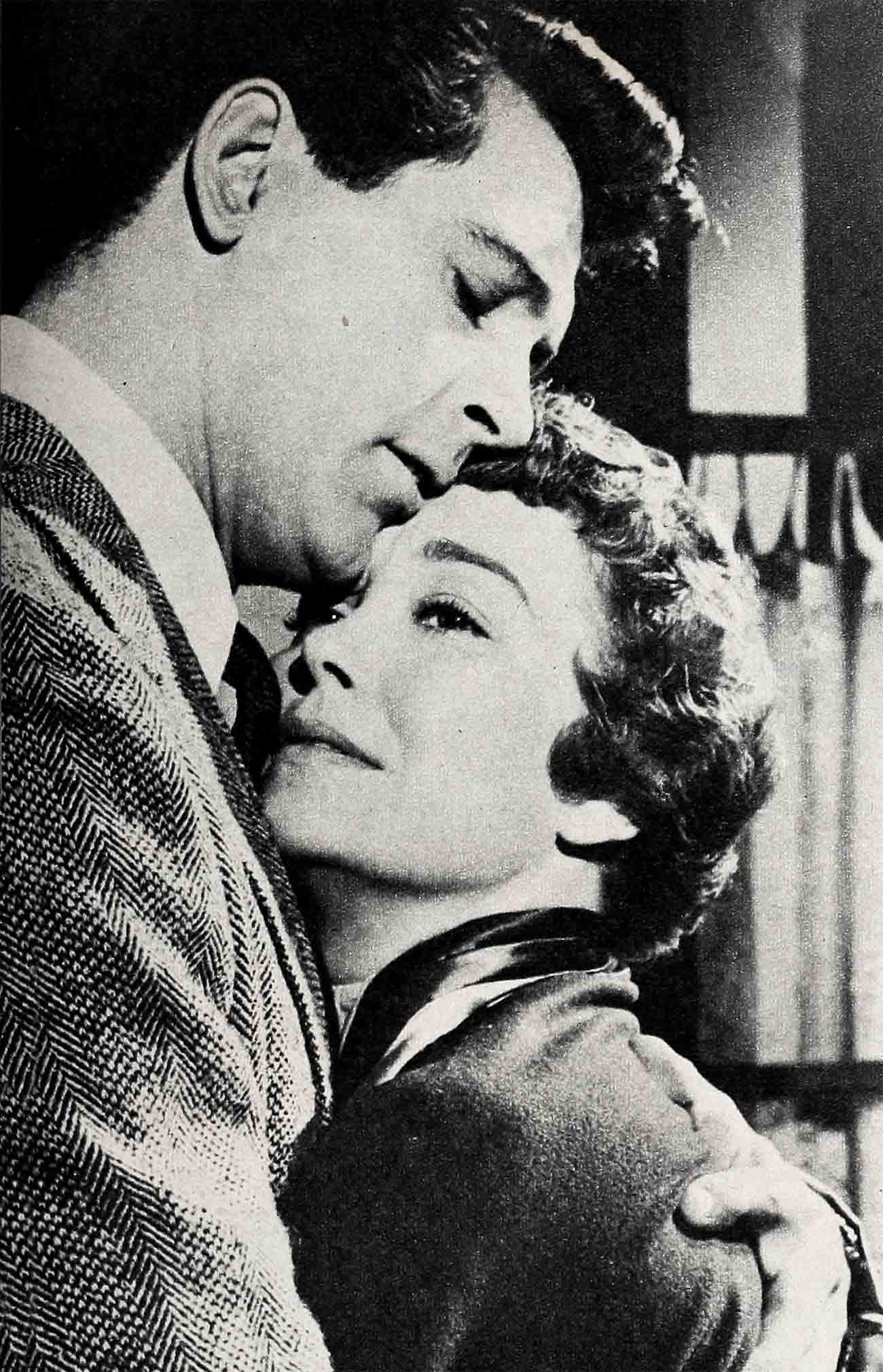
With the love story of Rock Hudson and Jane Wyman, U-I’s “Magnificent Obsession” touched every heart. And its inspiring theme left an imprint on memory
The competition was so close that each one of the runners-up for the Gold Medal also holds a secure place in fans’ hearts. Jane Wyman won her award with only one 1954 picture. But that one happened to be the Gold “Magnificent best-loved movie of 1954. Jane’s splendid dramatic performance set all the studios on her trail. Warners gets her for “Miracle in the Rain”; Paramount, for “Lucy Gallant”; U-I, for “All That Heaven Allows.”
A similar wholesome sweetness is the essence of Ann Blyth’s appeal. Her charm and musical skill in “Rose Marie” and “The Student Prince” brought her a PHOTOPLAY award, and her following can look forward to another Metro romance, “The King’s Thief,” Ann’s first film since she took time out for motherhood.

Asked to “Choose Your Stars,” the readers of PHOTOPLAY saluted Grace Kelly, the lass with the delicate air and the sturdy talent
Like Jane Wyman, Judy Garland was voted one of the year’s most popular actresses on the basis of a single 1954 performance. But what a performance! Judy lavished on Warners’ “A Star Is Born” enough incomparable song-selling, enough heart-catching dramatic acting to put across half a dozen movies. The emotional sympathy that audiences expected to feel at her comeback was completely over-shadowed by sheer admiration.
In a lighter vein, Debbie Reynolds also combines singing talent with a fetching personality. M-G-M’s “Give a Girl a Break” and “Athena” exploited her sense of rhythm, as will its forthcoming “Hit the Deck.” But delectable Debbie was applauded chiefly for her exuberant clowning in RKO’s “Susan Slept Here.”
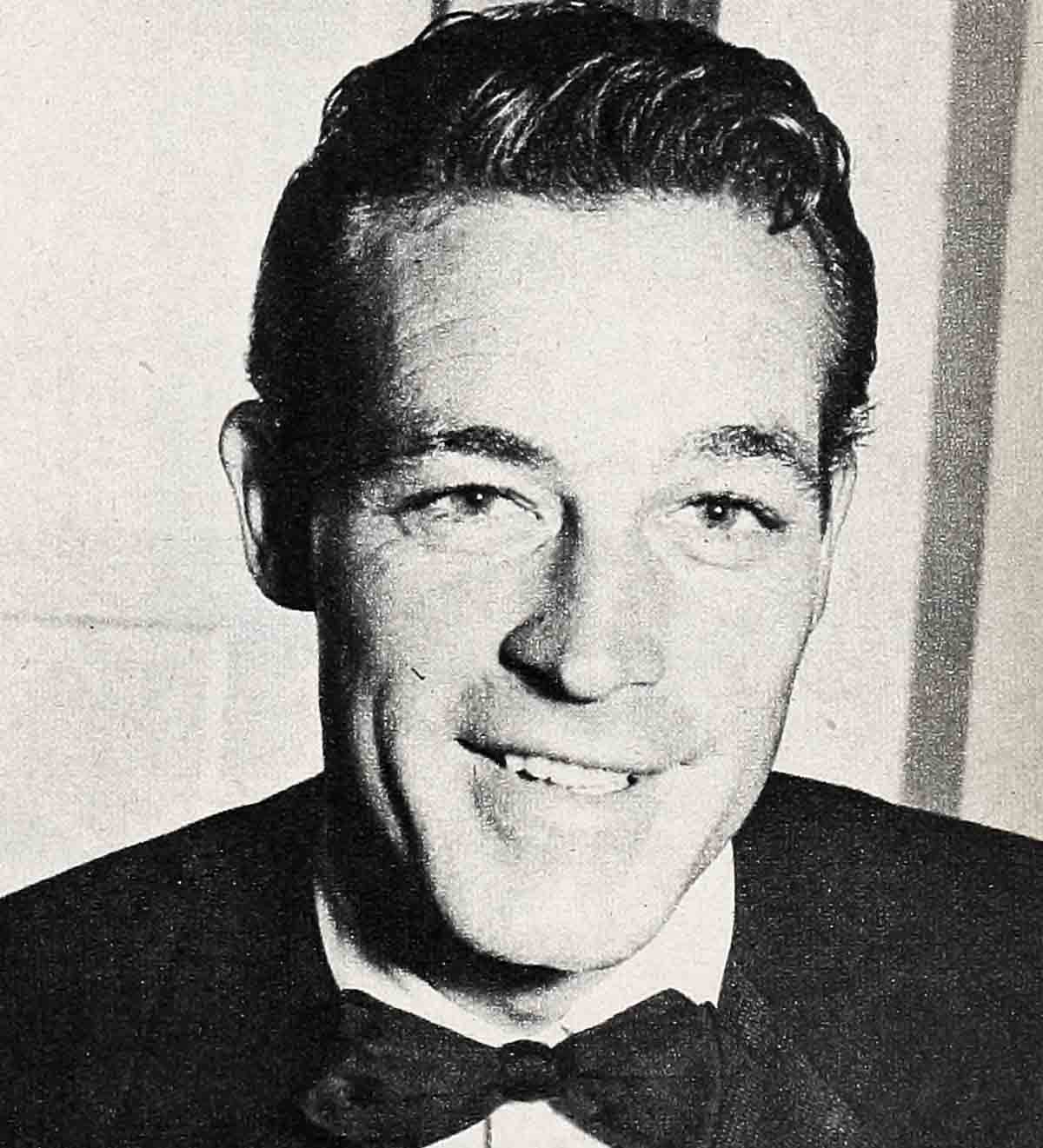
When opportunity knocked a second time, Guy Madison was there to answer. Readers see a shining future for this action her
On the masculine side, the list of runners-up is another powerhouse of fan appeal. After all, Gold Medal winner Holden was a runner-up in 1953, and any of his four 1954 rivals may next year claim one of those coveted golden discs for his own. U-I sent Tony Curtis from modern adventures in “Forbidden” and “Johnny Dark” back to medieval days in “The Black Shield of Falworth,” for some light-hearted, highly entertaining swashbuckling. His studio again makes variety Tony’s slogan for 1955, casting him as a singing, dancing. sailor in “So This Is Paris,” an incorrigible crook in “Six Bridges to Cross,” a man of action in “The Purple Mask.”

Youthful stars like Tony can’t make loyal fans overlook the solid experience and mature attractions of such established idols as James Stewart. Jimmy mixed the bumbling bashfulness of his early roles with his later poise to keep everyone absorbed in “The Glenn Miller Story.” He was a witty but never bored sophisticate in Paramount’s “Rear Window.” The year 1955 brings him vigorous western adventures in U-I’s “The Far Country” and Columbia’s “The Man from Laramie,” exciting plane exploits in “Strategic Air Command.”
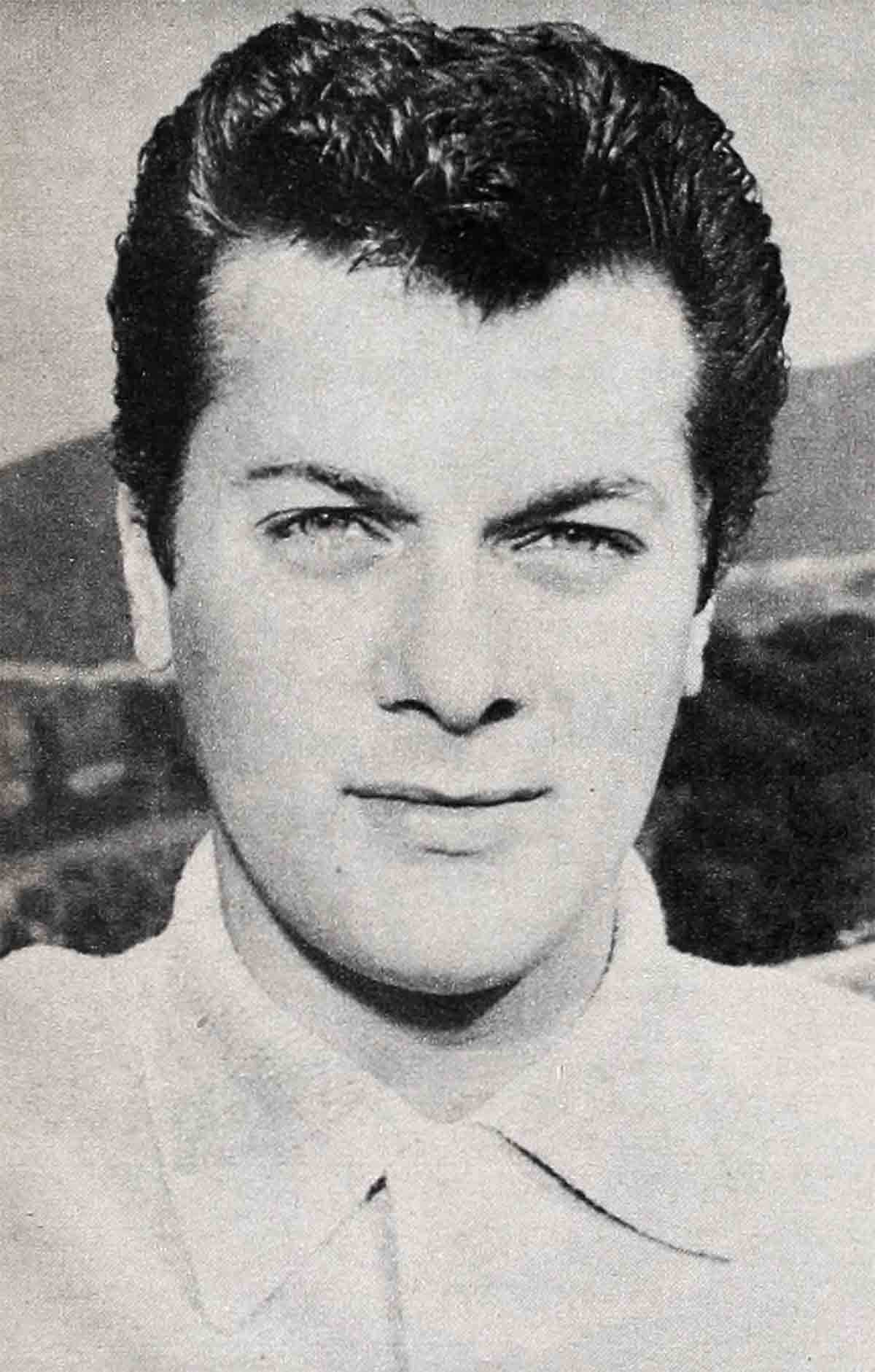
The year 1954 brought Marlon Brando to the fore as much more than a publicity- worthy eccentric. His PHOTOPLAY award marks public acceptance of Brando as an outstanding actor and a personality with great screen presence. If Columbia’s “The Wild One” and “On the Waterfront” and 20th’s “Désirée” haven’t sufficiently proved his versatility, just wait till you see him as a Damon Runyon character set to music in Goldwyn’s “Guys and Dolls.”
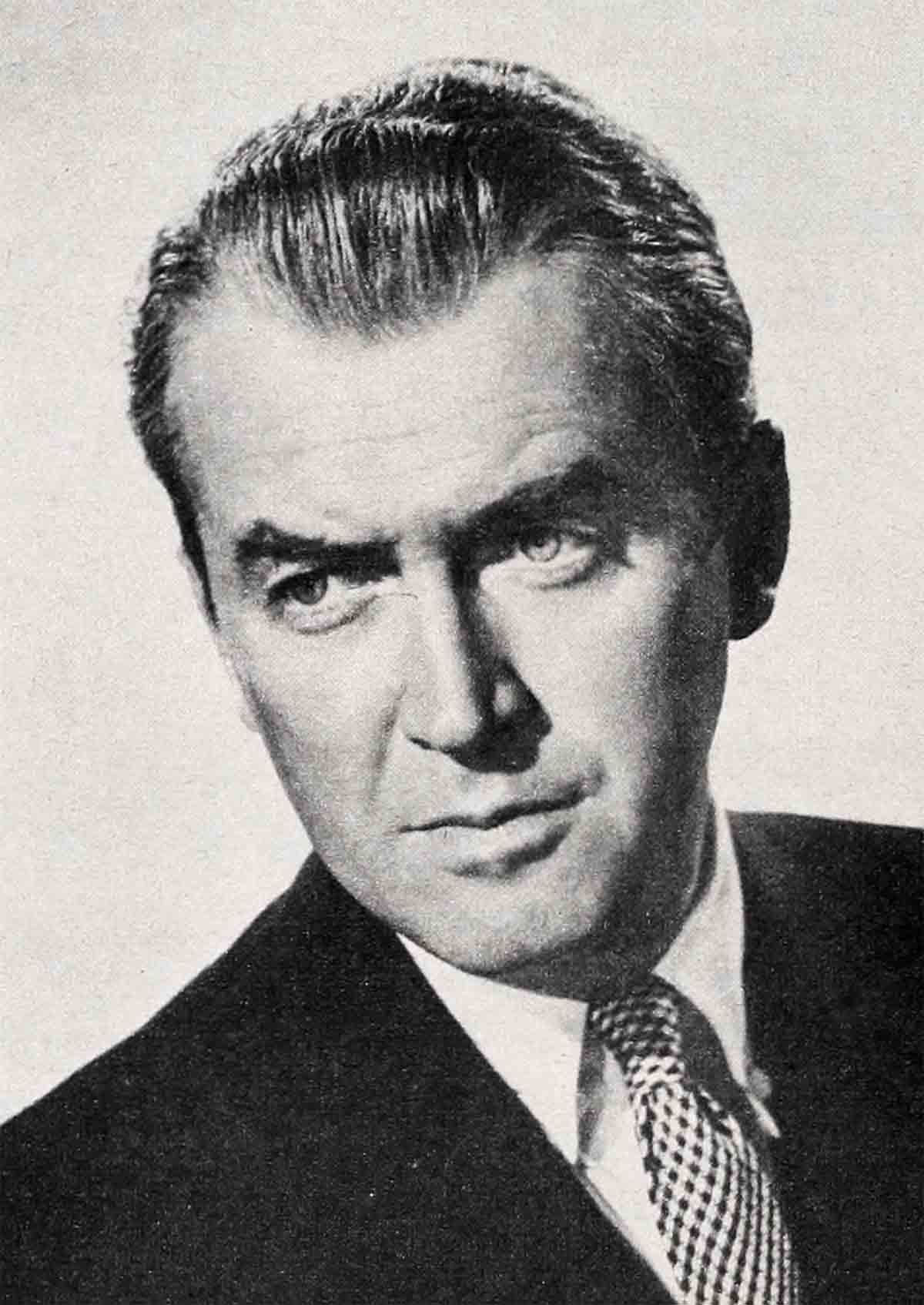
In 1954, Rock Hudson thoroughly justified the fans’ faith in his ever-growing ability, and their gratitude is symbolized by the PHOTOPLAY award. “Magnificent Obsession” marked a high point for Rock, while “Bengal Brigade” continued the action-film career that moves into 1955 with “Captain Lightfoot.” With coming assignments in “One Desire” and “All That Heaven Allows,” U-I gives its husky star the wider opportunities that the public has demanded.
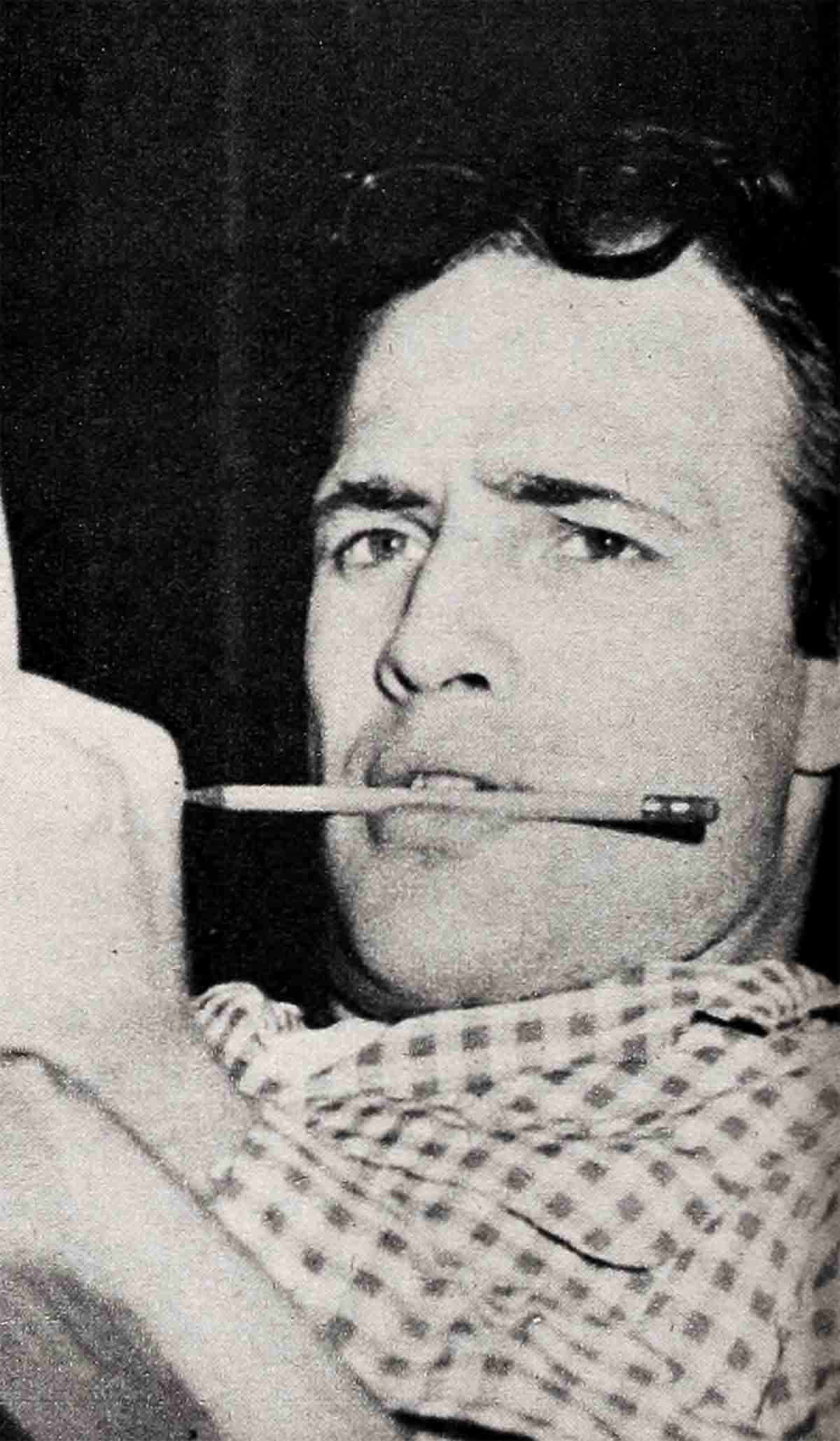
If the runners-up are likely bets as future Gold Medal winners, so, too, are the ten young players named most often by PHOTOPLAY readers in the “Choose Your Stars” balloting. These the fans count on to deliver outstanding performances in 1955. A walkaway leader in the feminine division was Grace Kelly. Handicapped earlier by colorless roles, Grace was last year given the chance to prove that. she has talent to match her loveliness. She showed emotional power in Warners’ “Dial M for Murder,” subtle sex appeal in “Rear Window,” indomitable strength of character in “The Country Girl.” This year, in M-G-M’s “Green Fire” and Paramount’s “The Bridges at Toko-Ri” and “To Catch a Thief,” she may be depended on to live up to the voters’ predictions.
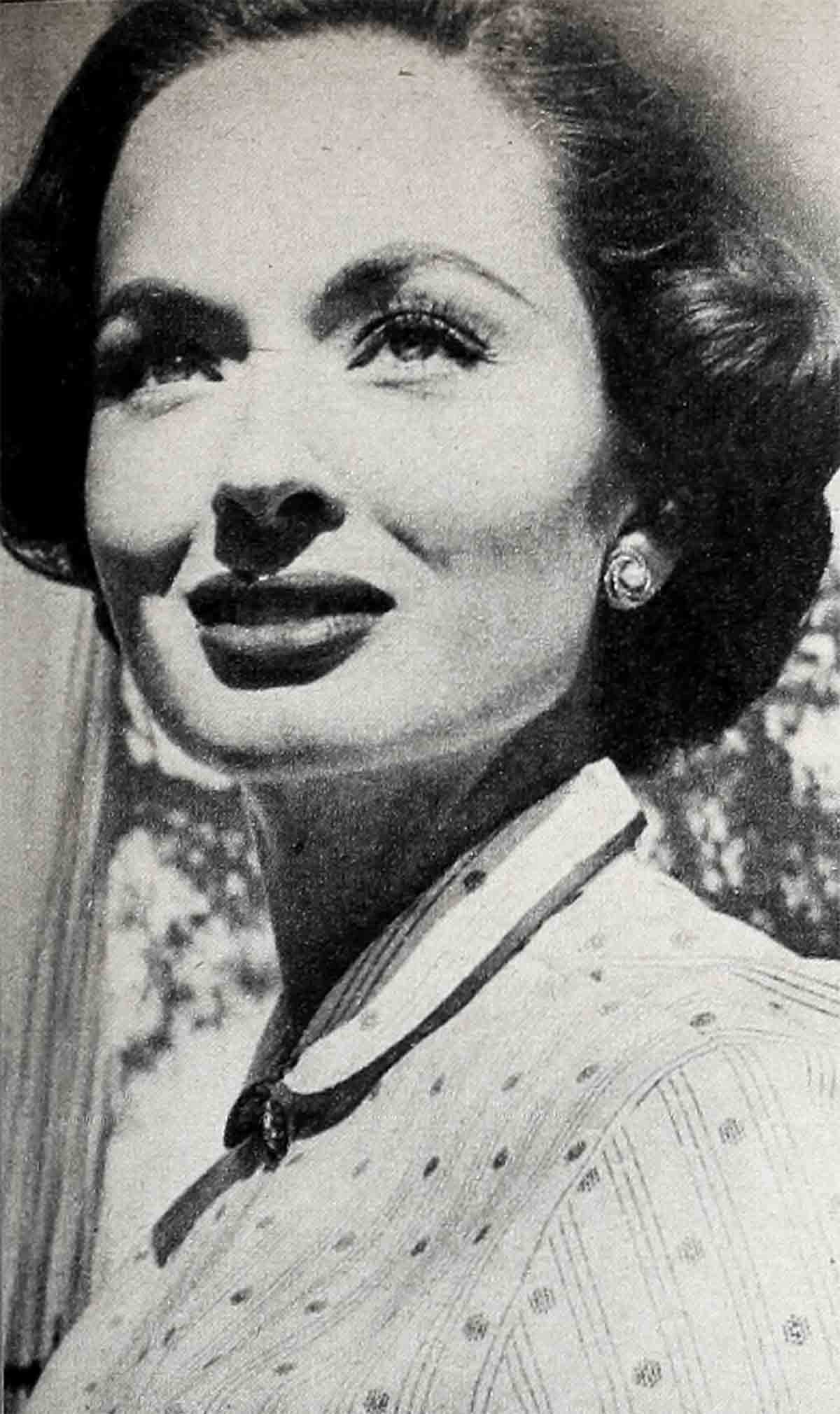
Her companion “Choose Your Stars” winner scored a unique sort of triumph. With Warners’ “The Command,” Guy Madison firmly established a second Hollywood career, canceling out his youthful failure. Ten years ago he was termed promising, but the promise wasn’t kept. Now a flood of ballots has signaled the readers’ confidence that Guy has the mature skill to meet the challenge of such films as Columbia’s “Five Against the House” and 20th’s “The Tall Men.”
Barbara Rush, among the players also singled out for future distinction, is lucky in that her studio shares the fans’ high hopes for her. Her appealing secondary performances in “Magnificent Obsession” and “The Black Shield of Falworth” convinced U-I that she deserved a leading role, and she gets one in “Captain Lightfoot,” another in “Kiss of Fire.”
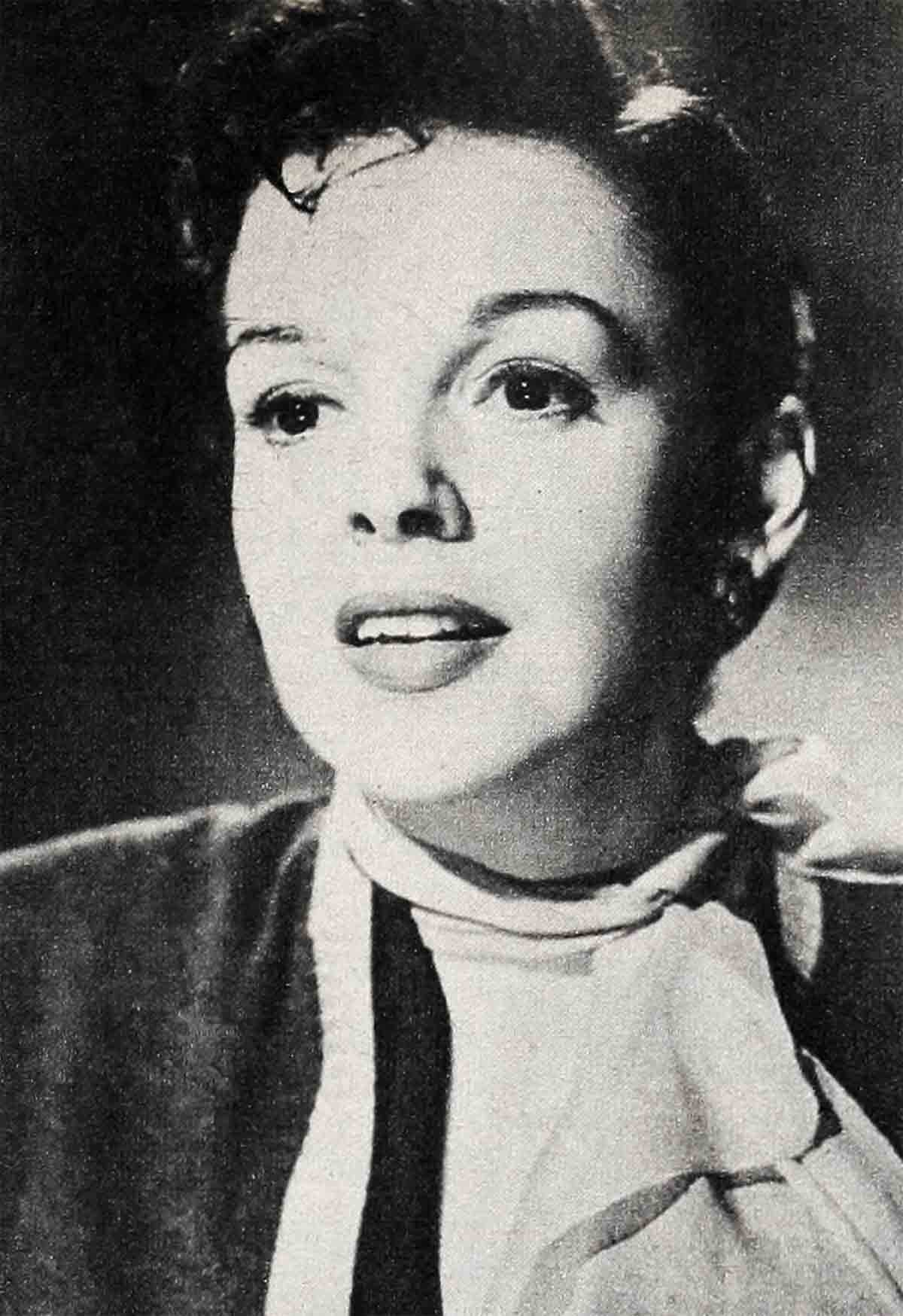
Kim Novak, too, has her company’s enthusiastic backing. Columbia introduced her in “Pushover,” gave her a piquant comedy assignment in “Phffft” and will present her next with Guy Madison in “Five Against the House.” Touted in advance as another Monroe, Kim turns out to be very much herself, tall and delicately curved, with a subdued, feline sort of allure.
Seen only in 20th’s “King of the Khyber Rifles” during 1954, Terry Moore turned down other offers, holding out for a truly suitable role. Apparently, her fans approved her caution, for their ballots indicate the unshaken conviction that Terry is headed for top stardom. They’ll welcome her back to the screen in 20th’s “Daddy Long Legs.”
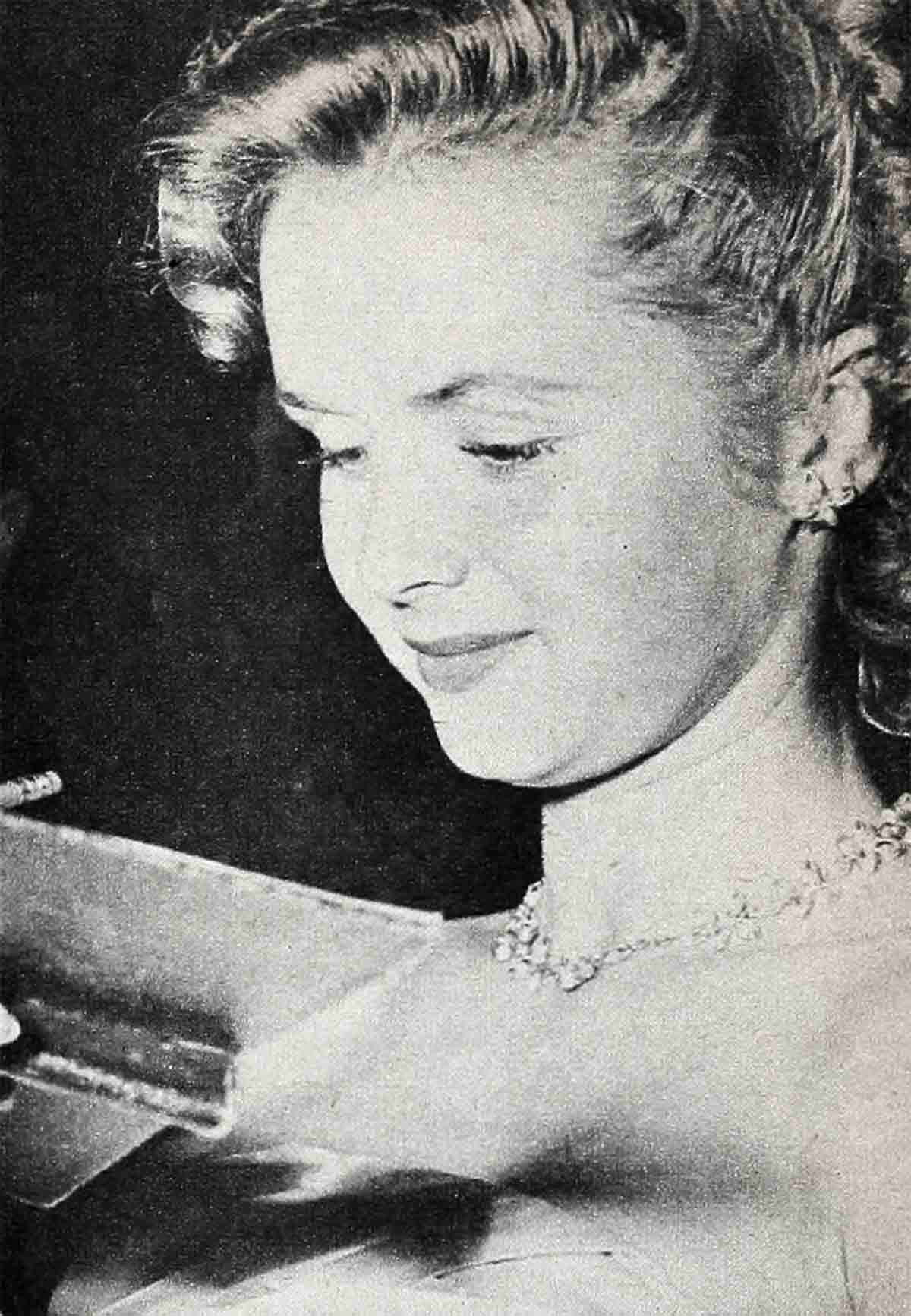
At the same studio, Maggie McNamara enchanted millions of moviegoers with her gay romancing in the sensationally popular “Three Coins in the Fountain.” An enticingly different film personality, Maggie has appeared so far as a comedienne, but 20th puts her versatility to the test in “Prince of Players.”
This highly dramatic picture serves as an encore for another of PHOTOPLAY’S “Choose Your Stars” runners-up. Remembered vividly for his performance in “The Robe,” Richard Burton has an even more rewarding role in “Prince of Players,” as the great 19th century actor, Edwin Booth.
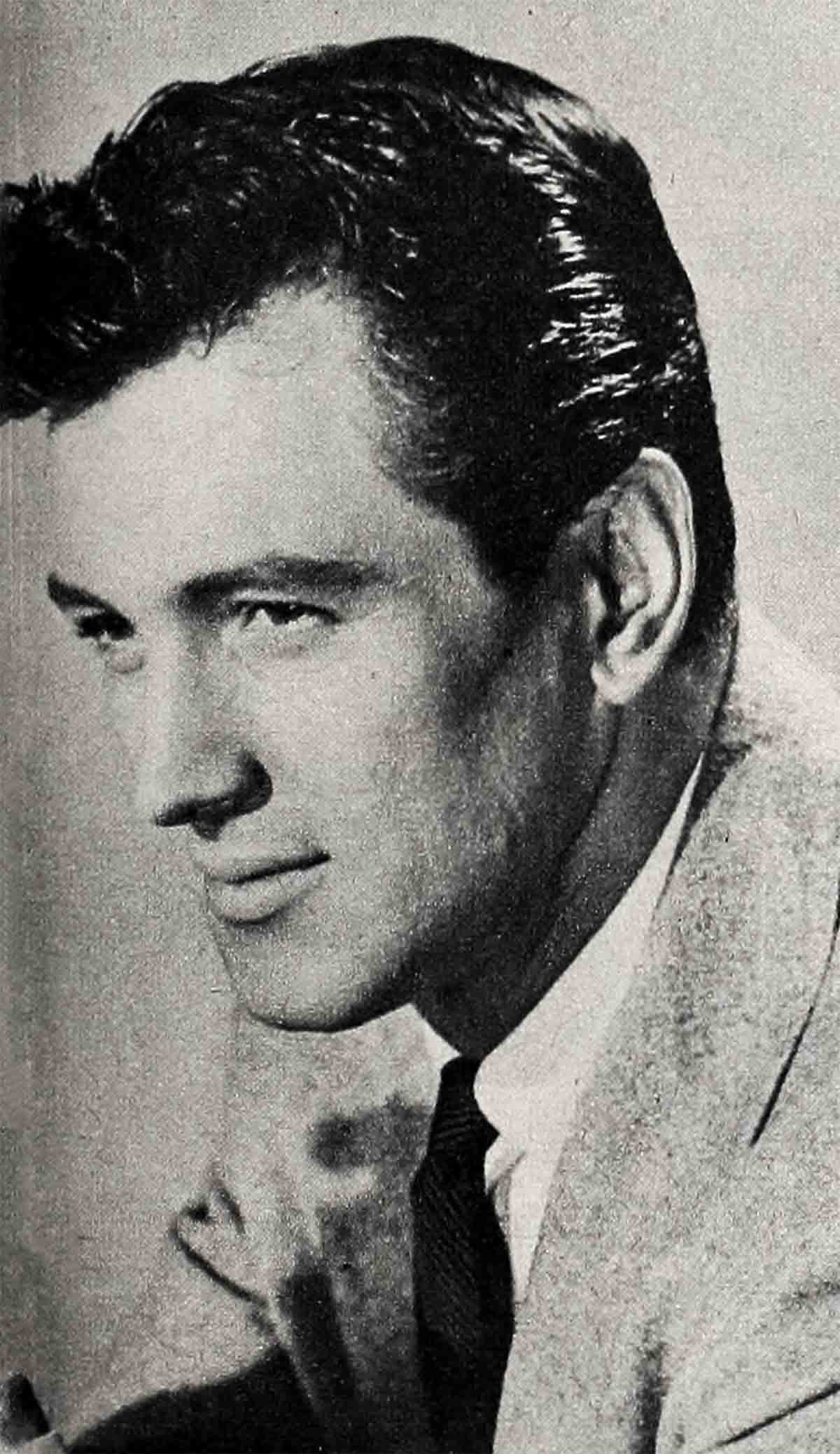
Richard’s fellow countryman Edmund Purdom stood out as the most sought-after new male star of 1954. The young Englishman, with slight Hollywood experience to his credit, was given leads in 20th’s “The Egyptian,” a fabulously expensive spectacle, and in “The Student Prince” and “Athena,” lavish musical romances. The votes of PHOTOPLAY’s readers show they’re sure that Purdom can keep up the pace this year, in M-G-M’s “The Prodigal” and “The King’s Thief.”
Fans were quick to welcome a rarity on the Hollywood scene: a very attractive young man who is also a very adept comedian. That’s Jack Lemmon, a hit at Columbia in “It Should Happen to You” and “Phffft.” success with equally rich assignments in “Three for the Show” and, on loan to Warners, in “Mister Roberts.”
George Nader made the grade more slowly. But his solid appeal and acting assurance registered even with a brief, sympathetic role in RKO’s “Carnival Story” and an amusing character job in U-I’s “Four Guns to the Border.” This year his fans will see the U-I newcomer advance to leads in “Six Bridges to Cross” and “Lady Godiva of Coventry.”
Like the winning players, the most popular movies of the year covered an exciting range of types to please every taste. In these pictures, excellent acting united with all the other great talents of the film industry.
U-I’s “Magnificent Obsession,” produced by Ross Hunter and directed by Douglas Sirk, stood out as a drama touched with both romantic love and love for humanity. Spectacular settings, action and religious feeling distinguished 20th’s “The Egyptian,” produced by Darryl F. Zanuck and directed by Michael Curtiz. Columbia’s “On the Waterfront,” produced by Sam Spiegel and directed by Elia Kazan, drew respect for its brutally honest examination of a present-day problem. In Warners’ “A Star Is Born,” produced by Sid Luft and directed by George Cukor, Hollywood looked at itself both affectionately and critically.
Filled with music, U-I’s “The Glenn Miller Story,” produced by Aaron Rosenberg and directed by Anthony Mann, was not really a musical, but the endearing story of a man’s life. On the other hand, Paramount’s “White Christmas,” produced by Robert Emmett Dolan and directed by Michael Curtiz, with Irving Berlin’s beloved tunes, was frankly, gloriously a musical. So was M-G-M’s “Seven Brides for Seven Brothers,” produced by Jack Cummings and directed by Stanley Donen; but its imaginative dances and amusing situations made it unique in its class.
Witty lines illuminated the bitter, ironic story of U.A.’s “The Barefoot Contessa,” written and directed by Joseph L. Mankiewicz. RKO’s “Susan Slept Here,” produced by Harriet Parsons and directed by Frank Tashlin, was a sunny, carefree sort of comedy. In arresting contrast, Warners’ “The High and the Mighty,” a Wayne-Fellows production directed by William A. Wellman, kept audiences in an exhilarating state of tension.
As the Gold Medal celebrates its thirty-fifth anniversary, the gratitude of PHOTOPLAY and the moviegoing public goes out to all the award winners, for the wonderful entertainment they have created—and will continue to create.
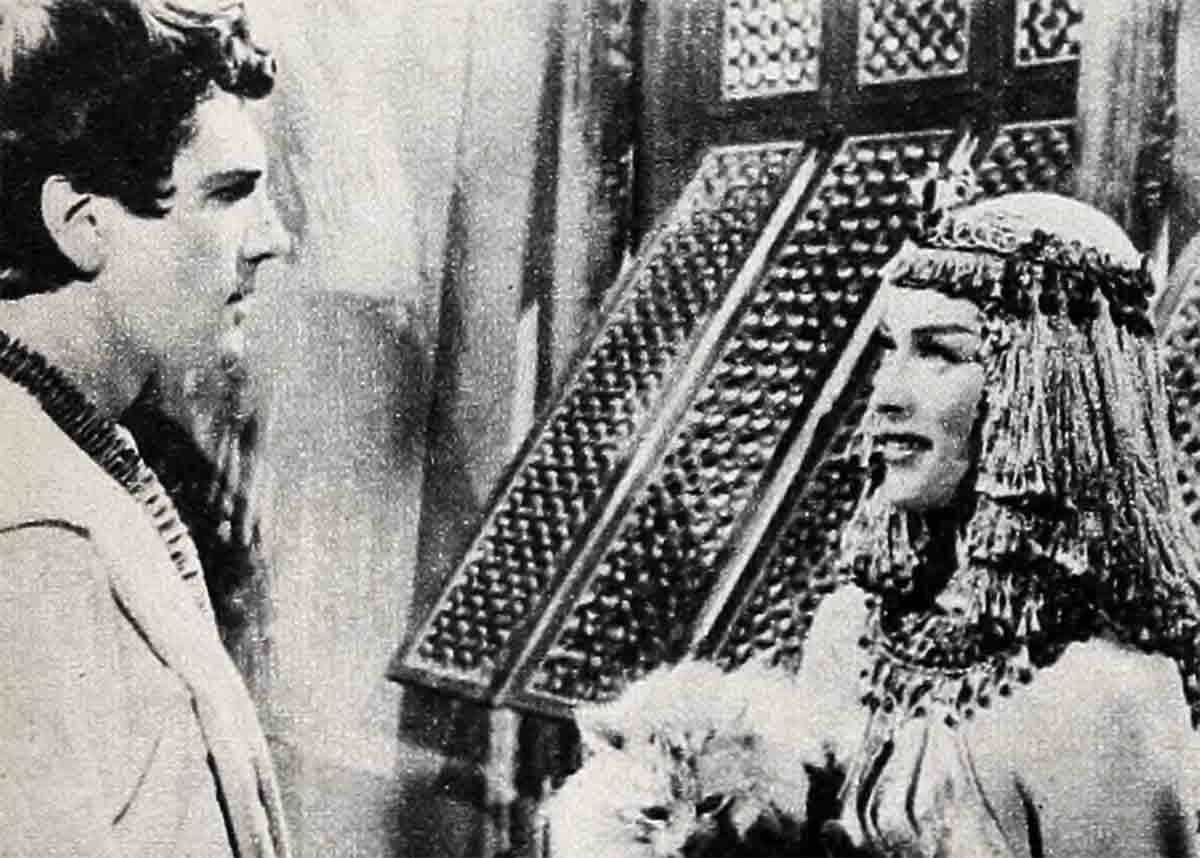
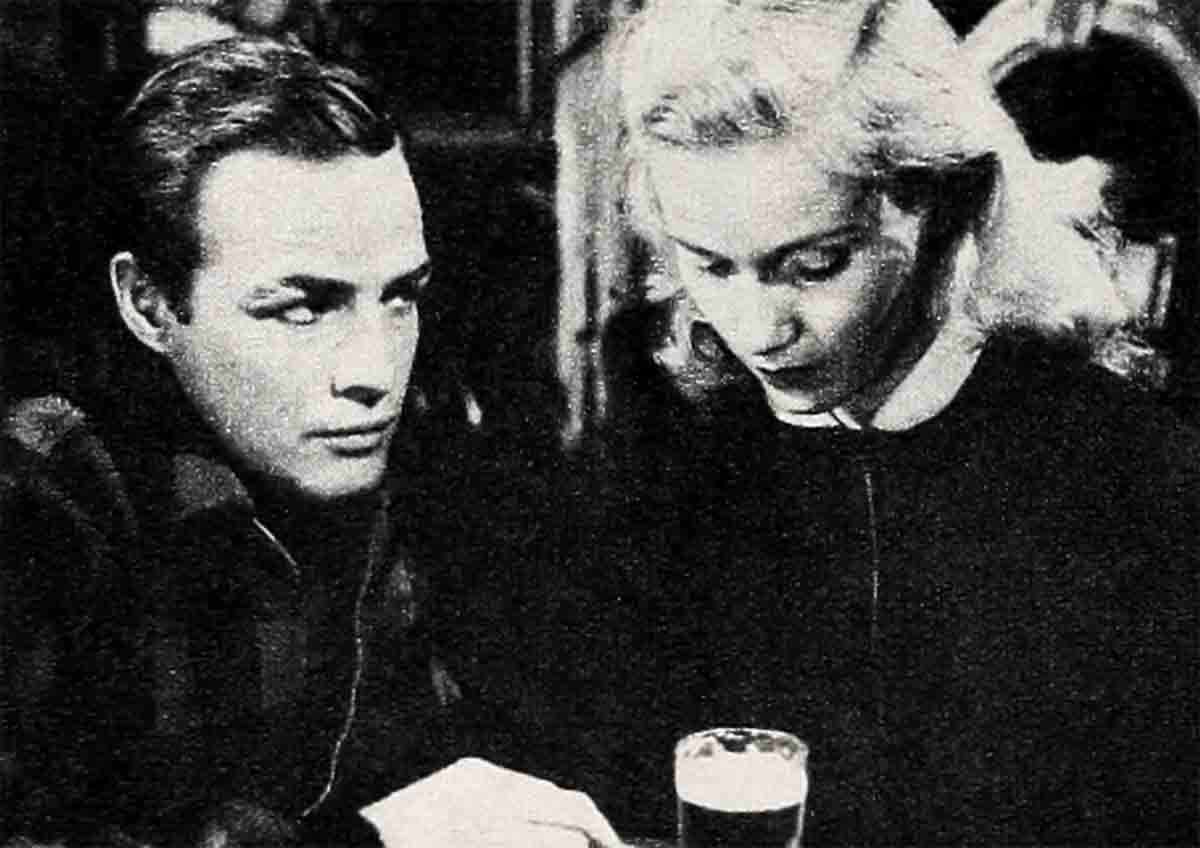
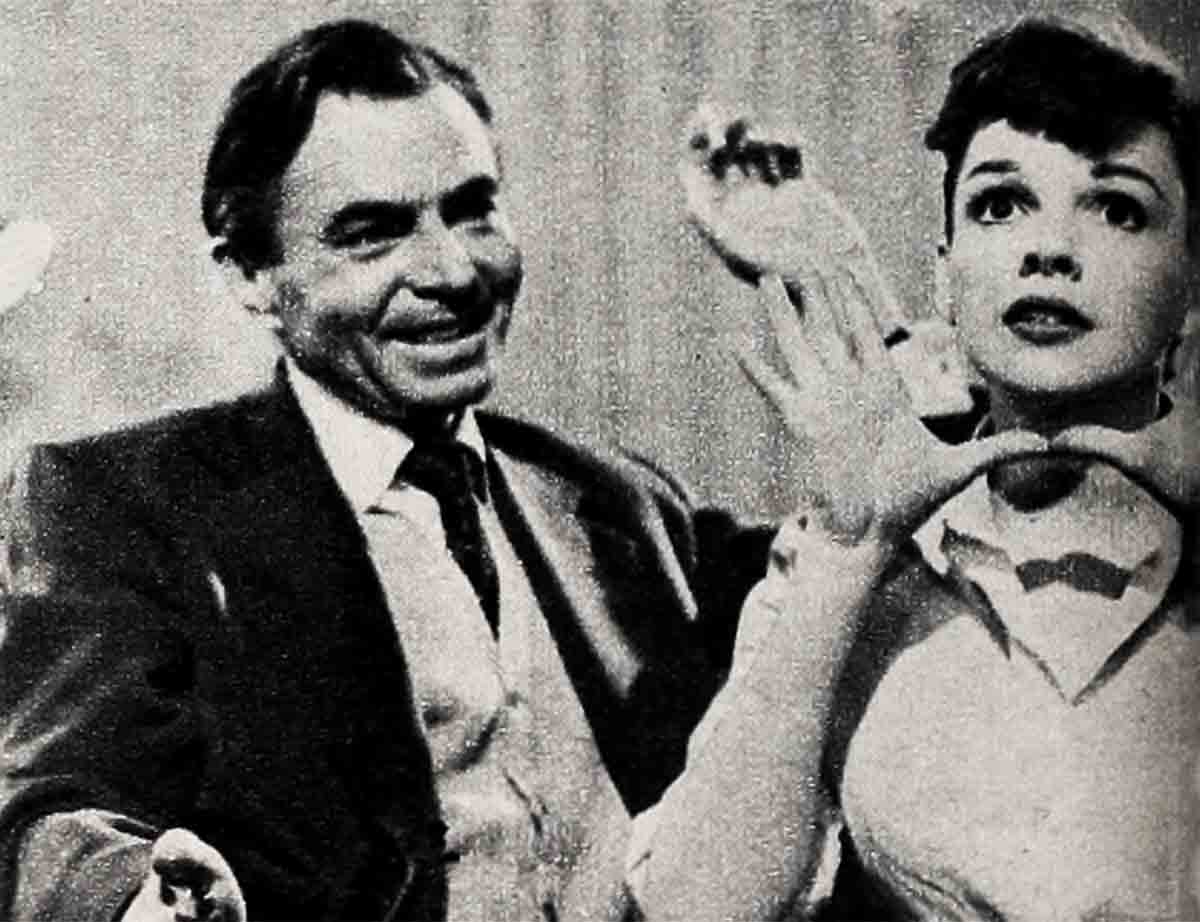
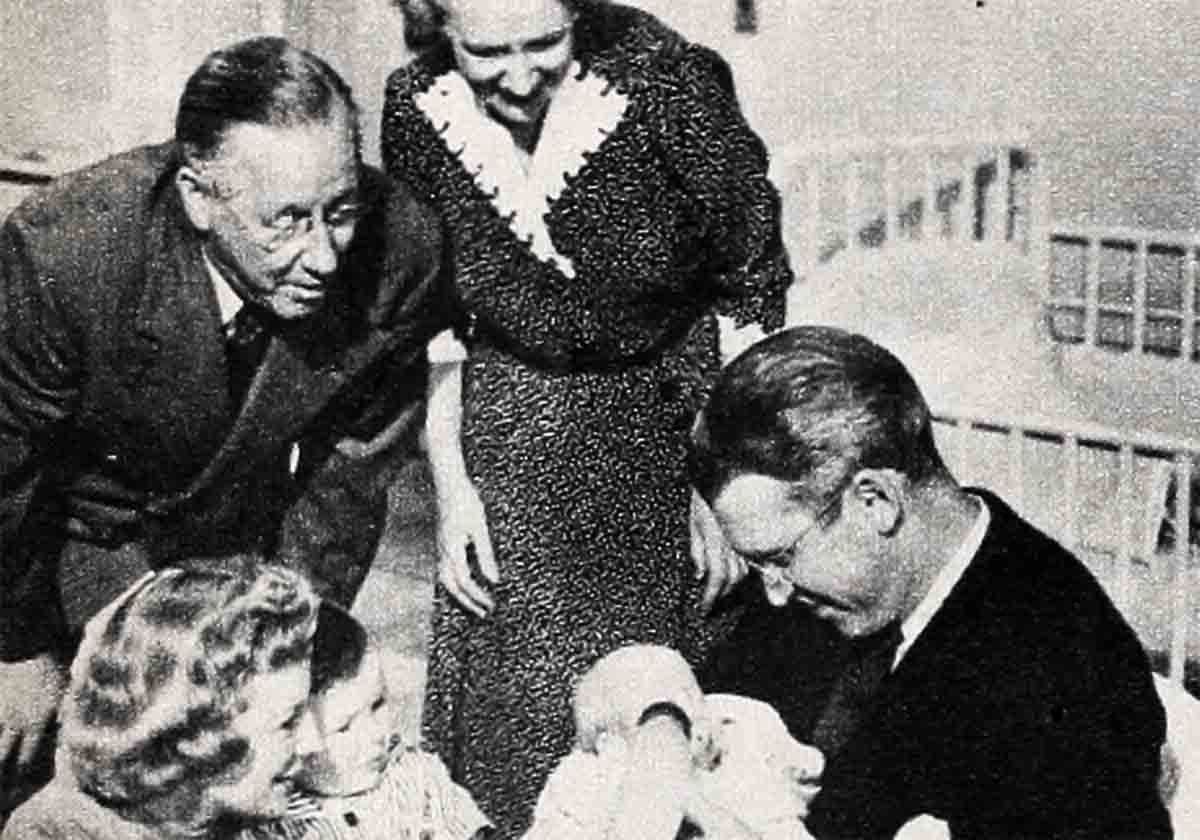
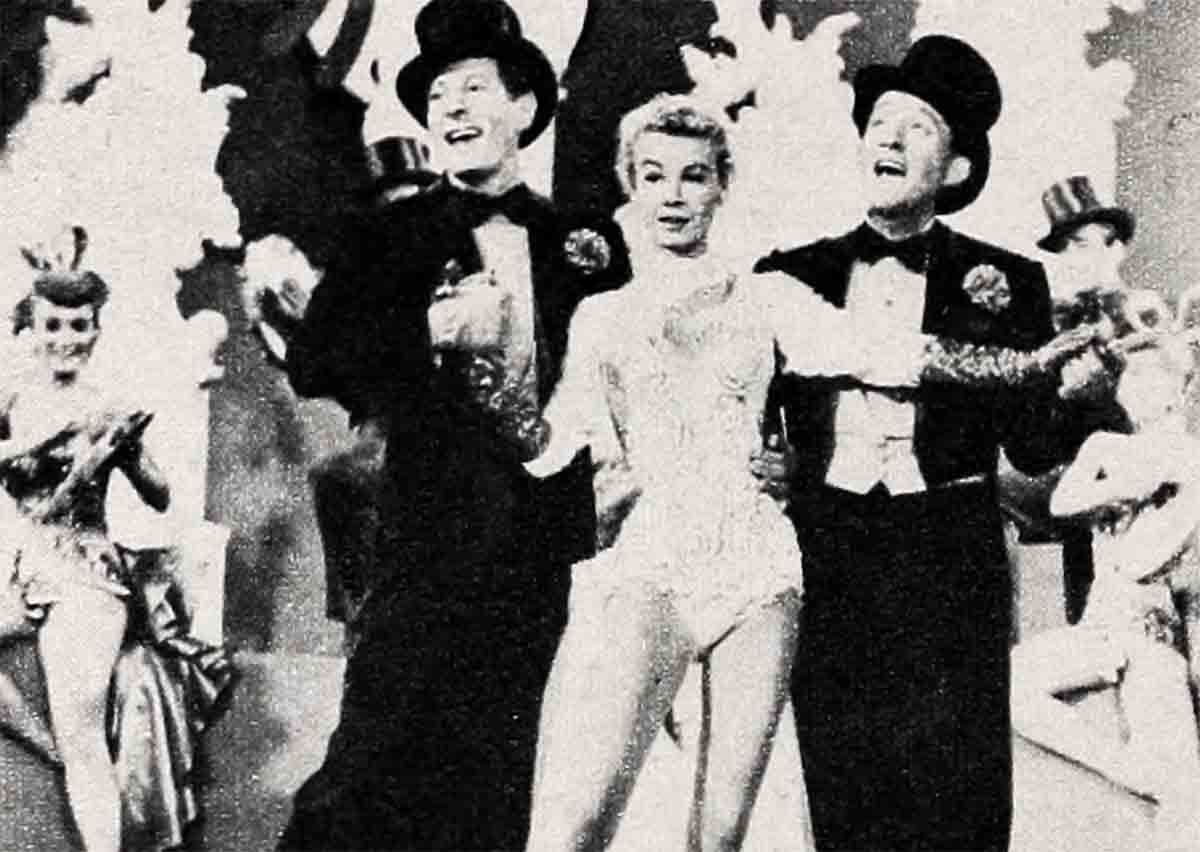
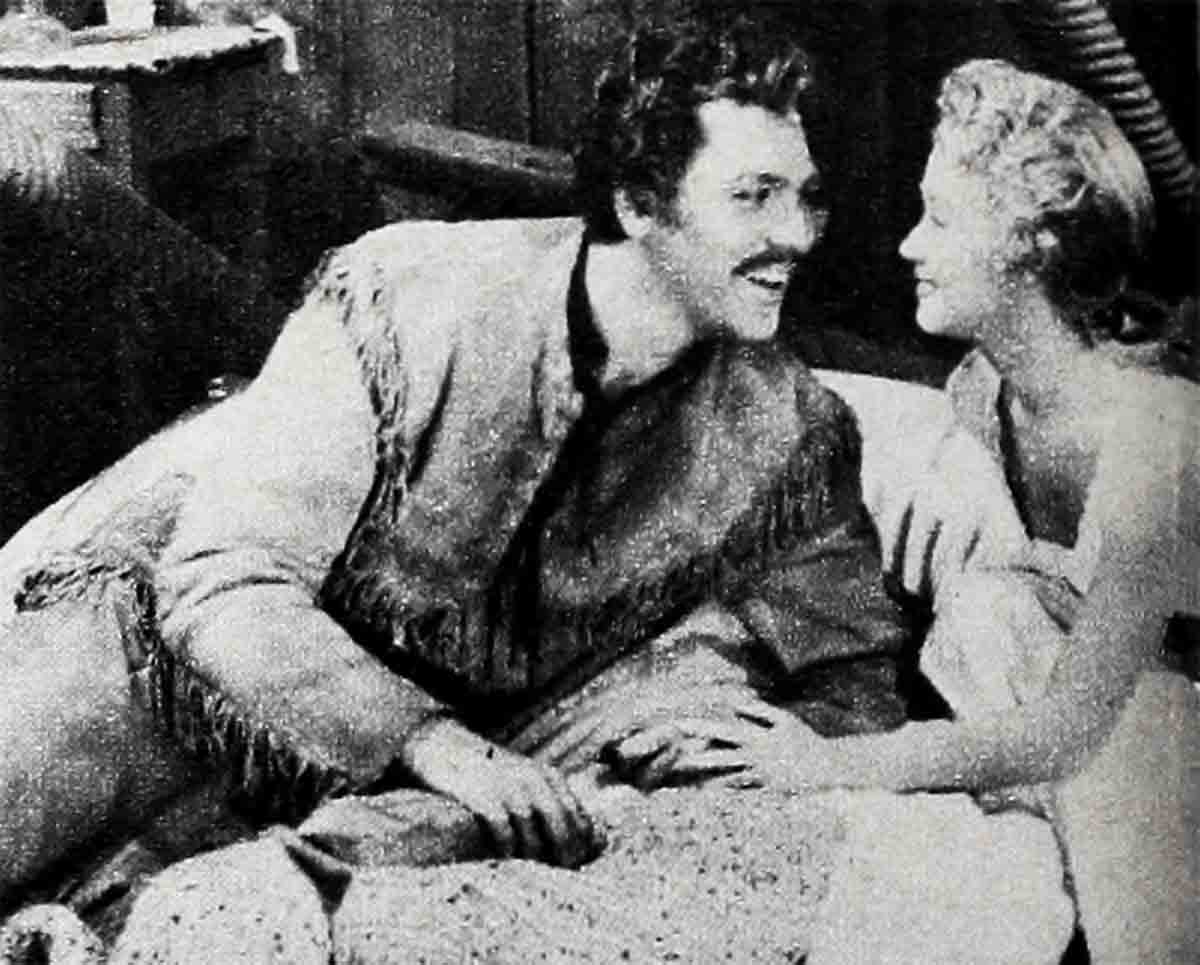
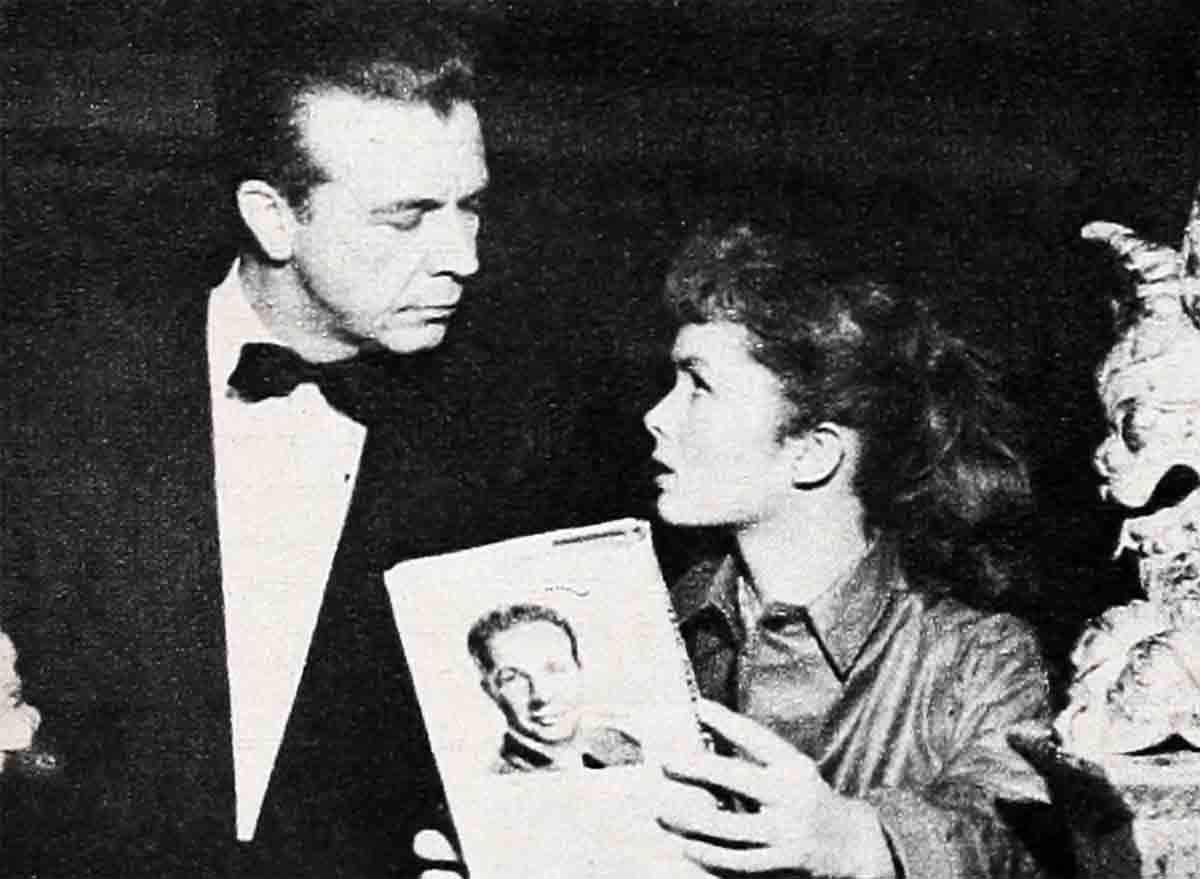
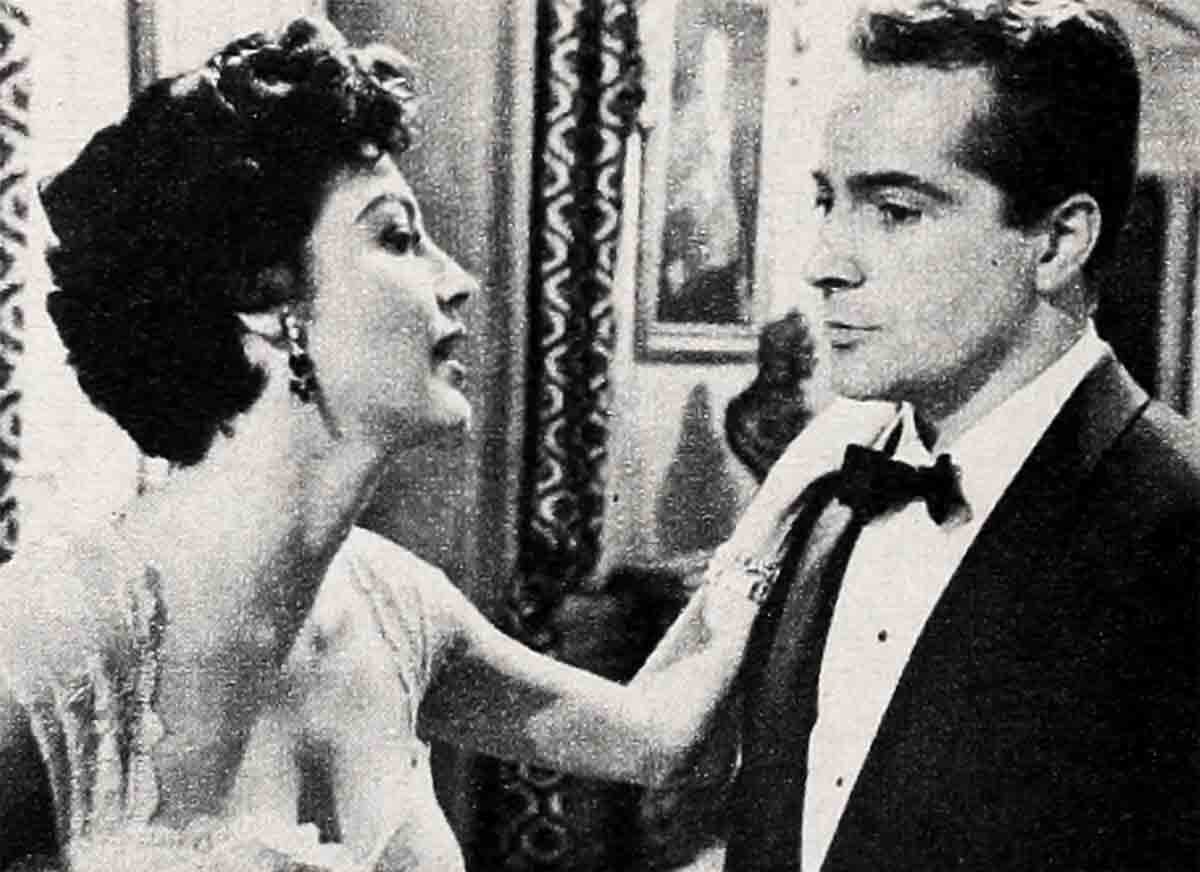
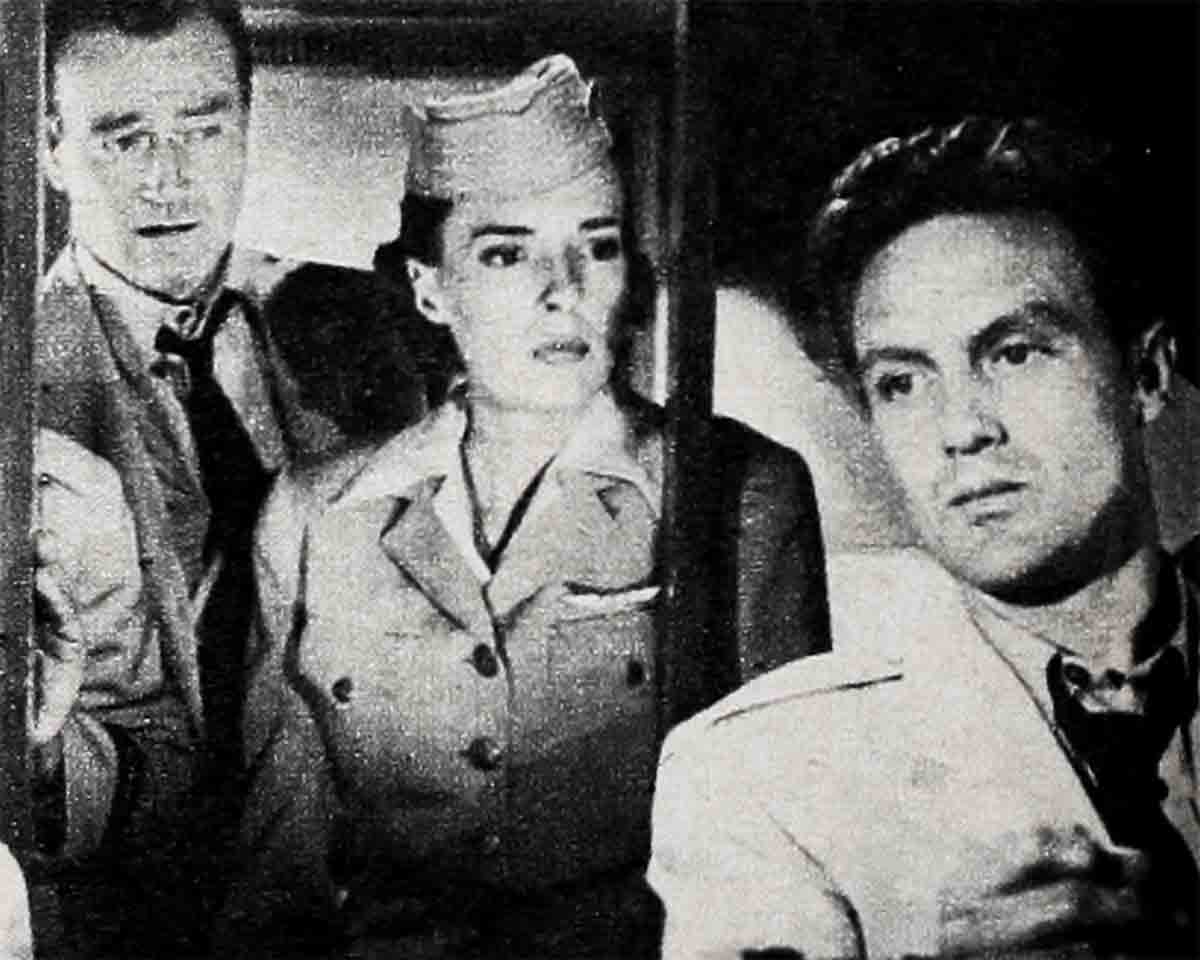
SPECIAL AWARDS:
Y. FRANK FREEMAN, production head of Paramount, made a magnificent contribution to motion pictures with the introduction of a dazzling new process—VistaVision. Unveiled for a delighted public in the smash hit “White Christmas,” VistaVision provides a big, big picture of superb clarity. Film runs through a new type of camera in a different way, so that each frame of the negative is larger than the standard size. There-fore, every detail remains bright and clear even when the pictures are enlarged to fill today’s vast screens. And movies shot in VistaVision can be shown in various proportions.
DANNY KAYE did credit to the motion-picture industry and aided the cause of world friendship through his work as Ambassador at Large for the United Nations International Children’s Emergency Fund. Welcomed by dignitaries in Burma, India, Thailand, the Philippines, Danny was: still more deeply impressed at meeting the children helped by UNICEF. He reports on his trip in the movie “Assignment—Children,” shot with Paramount’s cooperation. This studio starred him in “Knock on Wood” and “White Christmas” and presents him next in “The Court Jester.”
OTTO PREMINGER, talented producer-director, gave the filmgoing public a rare treat by translating the classic theme of the opera “Carmen” into a distinguished American movie, “Carmen Jones.” Lyricist Oscar Hammerstein wrote this ver- sion of the Bizet music-drama for the stage, where it won acclaim. But in his production for 20th, Preminger took full advantage of CinemaScope spaciousness, told the story with the free-ranging vitality that only the screen can achieve. He chose his players (headed by Dorothy Dandridge and Harry Belafonte) shrewdly, guided them unerringly.
VAN JOHNSON emerged during 1954 as an actor of real scope and force. He first impressed fans as simply a boy-next-door type, noted more for exuberance and an engaging grin than for versatile performances. After that phase of his career faded, he even deserted the screen briefly to try his fortune as a nightclub entertainer. But he returned last year as a new, far more imposing Van Johnson. He was equally convincing as a rugged Navy man in “The Caine Mutiny” and as a troubled husband in M-G-M’s “The Last Time I Saw Paris.” His next: Columbia’s “The End of the Affair.”
THE END
It is a quote. PHOTOPLAY MAGAZINE MARCH 1955




